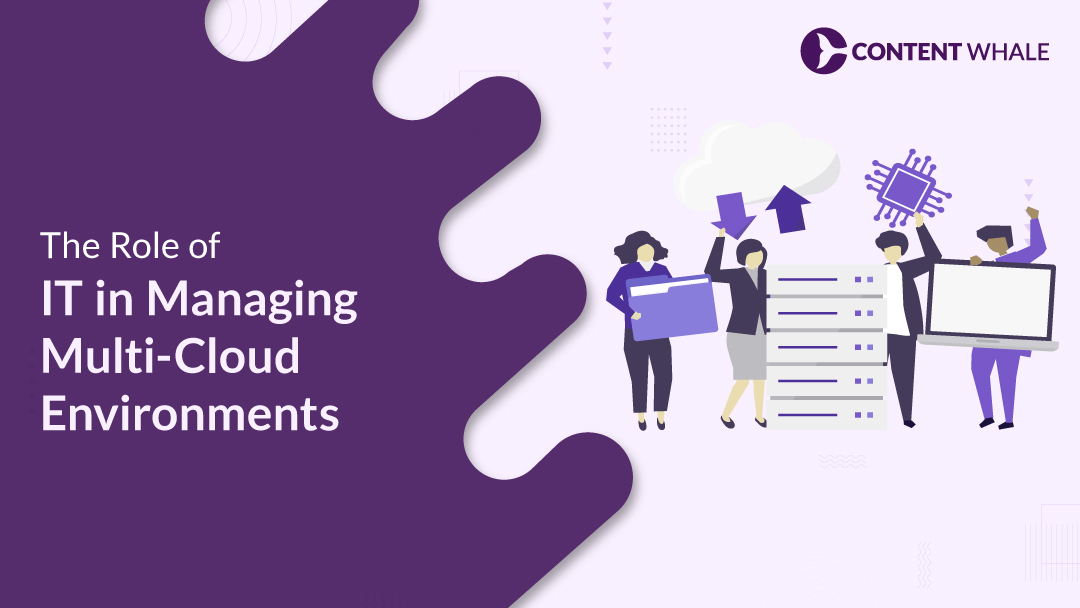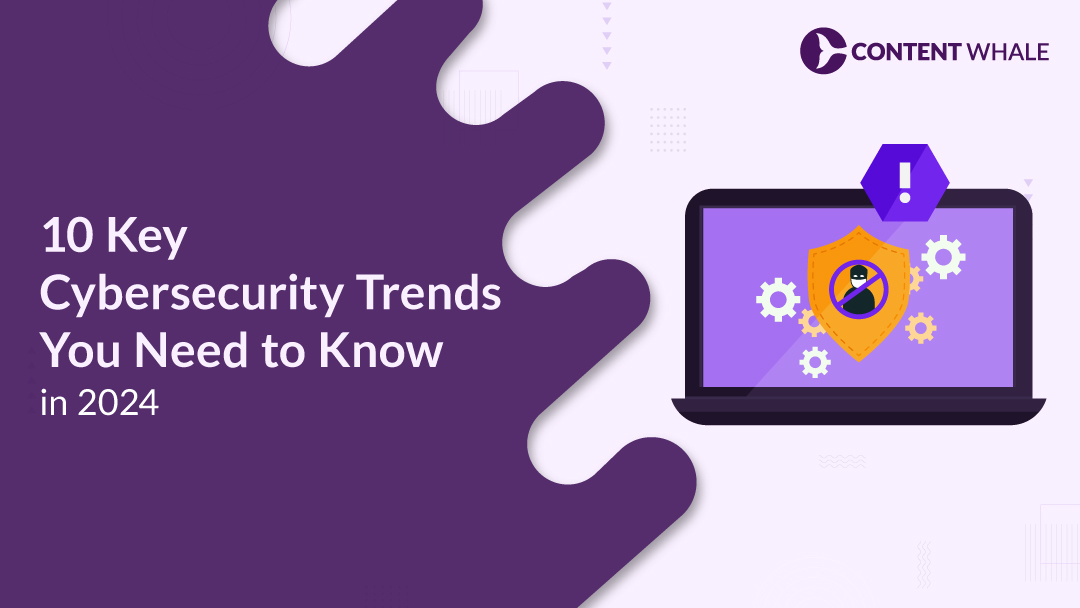As organizations increasingly adopt multi-cloud environments, the role of IT in multi-cloud management becomes more vital. Businesses are leveraging multiple cloud providers to enhance flexibility, performance, and avoid dependency on a single vendor.
However, managing multiple cloud services is no simple task. IT teams must ensure smooth multi-cloud integration, handle data security in multi-cloud systems, and implement efficient cloud orchestration for seamless operations.
IT is also responsible for cost optimization, ensuring that cloud resources are used efficiently across platforms while maintaining security standards. From overseeing cloud management platforms to addressing security challenges in multi-cloud, the IT department is at the heart of driving success in these complex environments.
By applying the right strategies, such as cloud governance, workload distribution, and multi-cloud architecture, businesses can ensure their operations remain agile, secure, and cost-effective in an increasingly competitive market.
1. Key Challenges in Multi-Cloud Environments
Managing a multi-cloud environment introduces a set of challenges that IT teams must address to maintain efficiency, security, and cost-effectiveness. Here’s a breakdown of the most common challenges and how IT can mitigate them:
a) Multi-Cloud Integration
- Challenge: Each cloud provider uses different APIs, tools, and management consoles, making multi-cloud integration complex. This lack of uniformity can lead to inefficiencies and delays in operations.
- IT’s Role: IT teams must employ effective cloud management platforms to ensure a smooth integration of various services and resources, allowing for streamlined operations across multiple clouds.
b) Data Security in Multi-Cloud
- Challenge: Ensuring data security in multi-cloud environments is critical, as sensitive data is distributed across different providers, each with varying security measures. This broadens the attack surface and increases the risk of data breaches.
- IT’s Role: IT must implement uniform security protocols across all platforms, including encryption, access control, and regular security audits. Cloud compliance is also essential to meet global and regional regulations, safeguarding data integrity.
c) Cost Optimization
- Challenge: The flexibility of multi-cloud can sometimes result in cost inefficiencies if not properly managed. Unused resources or misallocation of services can lead to inflated cloud bills.
- IT’s Role: IT departments need to focus on cost optimization by using advanced cost management tools to monitor and optimize resource usage across platforms.
d) Cloud Orchestration and Workload Balancing
- Challenge: Efficient cloud orchestration and workload balancing across different platforms require constant monitoring and optimization to prevent overburdening any one provider.
- IT’s Role: By employing cloud automation tools, IT can automate processes, distribute workloads evenly, and ensure continuous cloud optimization.
2. Essential IT Strategies for Multi-Cloud Management

Managing a multi-cloud environment effectively requires a robust strategy to address its inherent complexities. Below are key strategies that IT teams can implement to ensure seamless operations, optimized costs, and enhanced security across multiple cloud platforms.
a) Centralized Cloud Management Platforms
- What it solves: A major challenge in multi-cloud environments is managing different cloud providers with varying interfaces and tools.
- How it works: By adopting centralized cloud management platforms, IT teams can monitor, manage, and govern all cloud environments from a single interface. This helps streamline operations, ensure better cloud governance, and improve decision-making by providing a consolidated view of cloud resources.
- Benefits: Simplifies management, improves visibility, and enhances multi-cloud integration.
b) Implementing Automation for Efficiency
- What it solves: Manually managing cloud operations increases the risk of human error and can be time-consuming.
- How it works: Leveraging cloud automation tools like Infrastructure as Code (IaC) and orchestration platforms such as Kubernetes automates tasks such as resource provisioning, scaling, and monitoring. This boosts operational efficiency and allows IT teams to focus on more strategic initiatives.
- Benefits: Reduces manual intervention, lowers operational risks, and ensures continuous cloud optimization.
c) Security and Compliance Best Practices
- What it solves: Security is a critical concern in multi-cloud architecture, especially when data moves between different environments.
- How it works: IT must enforce data security in multi-cloud setups by implementing a zero-trust model and using encryption and multi-factor authentication. Regular security audits ensure that data across platforms remains secure. Cloud compliance with regulations like GDPR is crucial to avoid penalties.
- Benefits: Mitigates risks, ensures compliance, and enhances overall cloud security.
d) Monitoring and Continuous Optimization
- What it solves: Without real-time insights, identifying performance bottlenecks and inefficiencies becomes challenging in a multi-cloud setup.
- How it works: Using cloud-native monitoring tools, IT can track resource utilization, application performance, and security threats in real time. This allows for dynamic adjustments to workloads and resource distribution, ensuring optimal performance and cost optimization.
- Benefits: Improves performance, enhances visibility, and enables proactive resource management.
Searched 6 sites
3. Benefits of a Well-Managed Multi-Cloud Environment
A well-managed multi-cloud environment offers significant advantages to businesses, improving their overall efficiency and resilience. Here are some key benefits:
a) Flexibility and Avoiding Vendor Lock-In
- Flexibility: By using multiple cloud providers, businesses can select the best service for each workload, improving performance and adaptability to market changes. This flexibility allows organizations to optimize resources and switch providers as needed, ensuring they aren’t tied to one vendor.
- Vendor Lock-In Prevention: With a multi-cloud approach, organizations avoid being locked into a single provider, ensuring they can negotiate better deals and shift services as required.
b) Enhanced Performance and Data Availability
- Performance Optimization: Distributing workloads across different clouds allows businesses to maximize performance for specific tasks, leading to better cloud performance optimization.
- Data Availability: By spreading data across multiple clouds, businesses enhance disaster recovery capabilities and ensure their systems are always operational, even during outages.
c) Cost Savings and Scalability
- Cost Efficiency: Using multiple providers enables businesses to optimize their spending by selecting cost-effective services. This cost optimization ensures companies can scale resources as needed without overspending.
- Scalability: A well-managed multi-cloud environment ensures seamless scalability, allowing businesses to grow without major infrastructure changes.
| # | Benefit | Description |
| 1 | Flexibility and Choice | Allows businesses to select the best services from different cloud providers, offering more control over cost, features, and performance. |
| 2 | Avoiding Vendor Lock-In | Reduces dependency on a single provider, enabling businesses to switch vendors without major disruptions, increasing operational flexibility. |
| 3 | Enhanced Resiliency | Improves disaster recovery and failover options by using multiple cloud providers, ensuring continuity even if one provider experiences downtime. |
| 4 | Optimized Performance | Enables companies to allocate workloads to the best-suited cloud provider, maximizing application performance and reducing latency. |
| 5 | Cost Optimization | By choosing the most cost-effective services across different providers, businesses can optimize cloud spending and avoid overpaying for unnecessary services. |
| 6 | Improved Compliance | Helps meet various regulatory requirements by allowing businesses to store data in specific geographic regions to comply with local data governance laws. |
| 7 | Scalability | Facilitates the scaling of cloud services up or down based on demand, providing businesses with the flexibility to grow without infrastructure concerns. |
4. Future Trends in Multi-Cloud Management

The future of multi-cloud management is being shaped by several significant trends in 2024. Here’s a look at what businesses can expect:
a) AI and Machine Learning Integration
- What’s happening: The integration of AI and machine learning into multi-cloud environments is revolutionizing how businesses optimize their resources. AI helps automate decision-making, predict future usage patterns, and streamline operational tasks.
- Impact: This trend is enabling smarter, real-time cloud management, reducing manual intervention, and improving efficiency.
b) Rise of Edge Computing
- What’s happening: Edge computing is gaining traction as more businesses need to process data closer to its source, reducing latency. This is particularly crucial for industries like healthcare and manufacturing that rely on real-time data processing.
- Impact: Multi-cloud strategies are evolving to include edge services, enhancing responsiveness and providing faster analytics for real-time decision-making.
c) Sustainability in Cloud Computing
- What’s happening: Environmental concerns are pushing businesses to adopt sustainable multi-cloud strategies. Companies are increasingly selecting cloud providers that prioritize energy efficiency and green computing.
- Impact: By focusing on sustainability, businesses can reduce their carbon footprint while maintaining cloud scalability.
d) Enhanced Security and Compliance
- What’s happening: As multi-cloud environments become more complex, ensuring cloud security and regulatory compliance is becoming a top priority. New advancements in security technologies, such as automated compliance tools and zero-trust models, are critical for protecting data across multiple platforms.
- Impact: These advancements help businesses manage security risks while adhering to strict regulatory requirements, ensuring secure cloud operations.
Conclusion

Managing a multi-cloud environment offers tremendous benefits, including increased flexibility, cost savings, and enhanced performance. However, to unlock these advantages, IT teams must navigate the challenges of multi-cloud integration, data security, and cost optimization. By leveraging centralized cloud management platforms, automating processes, and continuously monitoring cloud performance, businesses can create a scalable, secure, and efficient multi-cloud strategy.
As the future of multi-cloud management continues to evolve with emerging technologies like AI, edge computing, and sustainability-focused initiatives, businesses need to stay agile and proactive. Effective multi-cloud management not only ensures operational efficiency but also keeps companies at the forefront of innovation in today’s fast-paced digital world.
At Content Whale, we specialize in creating customized, high-quality content that addresses complex topics like multi-cloud management. Our expertise lies in delivering engaging, well-researched, and SEO-optimized content that educates and informs your audience while showcasing thought leadership.
Let us help you elevate your brand with clear, impactful messaging that drives results!
FAQs
To help better understand multi-cloud environments and their management, here are some frequently asked questions:
1. What is a multi-cloud environment?
A multi-cloud environment refers to the use of cloud services from more than one provider. This approach enables organizations to leverage the unique strengths of different platforms, enhancing flexibility and avoiding dependence on a single vendor.
2. What are the key challenges in managing multi-cloud environments?
Managing multiple clouds introduces complexities, such as integration issues, data silos, and increased security risks. Each cloud provider has different APIs, security protocols, and compliance requirements, making it difficult to apply a consistent strategy across all platforms. Cost management also becomes a challenge, as pricing models differ across providers, often resulting in unexpected costs if not properly monitored.
3. What role does IT play in multi-cloud management?
The role of IT in multi-cloud management is pivotal. IT teams must ensure cloud orchestration, seamless integration of services, maintain data security across clouds, and manage cost optimization effectively. Additionally, IT is responsible for setting up cloud monitoring and ensuring compliance with industry regulations across different cloud environments.
4. What tools are essential for multi-cloud management?
Several tools help simplify multi-cloud management, such as centralized cloud management platforms, automation tools, and cloud-native monitoring solutions. These tools provide IT teams with real-time insights, streamline resource allocation, and enhance security and performance management across different cloud providers.
5. What are the benefits of using a multi-cloud strategy?
A well-managed multi-cloud environment offers significant advantages, such as avoiding vendor lock-in, improved disaster recovery, and the ability to optimize performance by selecting the best service for each workload. Businesses can also reduce costs by leveraging cost-effective services from multiple providers and scaling resources based on demand.





